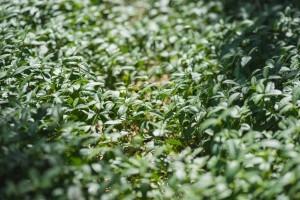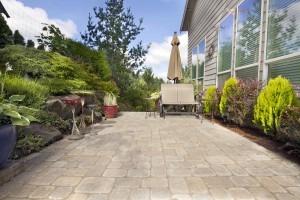
A sprawling lawn has long been a suburban status symbol. Offering space for shade trees and a place for the kids and dogs to play, the great American lawn holds a revered place in our heart. But when the labor of love in maintaining its lush green beauty seems more like just plain labor, reimagining the traditional lawn can give it new purpose with easier upkeep, a more environmentally friendly footprint and even lower water bills.
A offers Consumer Reports survey found that almost one third of homeowners who made some changes to their lawn reduced its size in some way. Most of the survey respondents replaced the grass with flower beds, patio space, ground cover or even artificial turf. Our July 2017 blog post - provides detailed instructions eight landscaping ideas for small lawns, which you can use as a starting point for advice and inspiration. Another source - on reducing a full lawn, from turfgrass removal to plant selection.
Advantages to reducing your lawn space include:- Easier maintenance (providing you choose the right replacement for grass).
- Less water consumption - According to the United States Environmental Protection Agency ( ), 30 to 60 percent of the water used in urban areas is used to water lawns. A sustainable mixed landscape requires two to three times less water than turf grass.
- Less yard waste - When you reduce your lawn space, your yard produces less waste to be composted or taken to the landfill. A 2,000 sq. ft. lawn on average produces 600 to 800 pounds of clippings every summer.
- Reduces air and noise pollution - Gas lawn mowers create air and noise pollution. Lawns in the U.S. cover about 20 million acres of residential land, with the average total amount of air pollution that lawnmowers cause at around 5 percent. The environment and your neighbors will thank you - especially if you're fond of mowing on early weekend mornings.

What is xeriscape?Xeriscaping is yet another way of reducing the amount of grass and high-maintenance plants. Drought-tolerant landscaping is referred to as xeriscape. This form of landscaping was originally developed for arid and semi-arid areas with severe water restrictions, but is now becoming the norm across the country due to water conservation, hotter summers and the desire to reduce water bills. Xeriscape does not offer just one look to a yard - it includes all types of drought-tolerant plants and garden styles.
As notes gardening expert , Julie Martens Forney in her a rticle on xeriscaping for using mulch is a key xeriscape idea. Mulch slows water evaporation from soil, moderates soil temperature, helps reduce weeds and gives planting areas a finished look.
Switch to native plantsClosely related to xeriscaping, landscaping with native plants provides the same advantages of less dependence on water and fertilizer, as they grow best in the local climate and soil conditions. Nurseries and home improvement centers offer a variety of native species, with recommendations on planting and care.

Edible gardening is fast becoming a popular hobby for homeowners, thanks to the local food movement and the desire of people to know the source of their food. You can get a variety of packaged seeds or starter plants of vegetables and herbs in any home center in your area. Because the plants are intended for consumption, have your soil tested for contaminants before starting. After all, if there are toxins in your soil, there will be toxins in your food. Should this be the case, you can instead consider container gardening or vertical gardening.
Expand your outdoor entertainment space
You can plant a pollinator-friendly garden with native plants that attract bees and butterflies. Our January 2018 blog post highlighted the advantages of cultivating a bee and butterfly garden, recommending such flowering plants as the monarch, pentas, and shrimp. Most of these Florida-friendly plants are heat, salt and drought resistant and are therefore low-maintenance. However, be sure to avoid using insecticides and herbicides.
Invest in gravelA popular choice in desert areas, decorative gravel is available in a variety of colors and shapes that lend visual interest to the yard. Writing for Landscaping Network , author and horticulture expert Maureen Gilmer covers the basics of decorative gravel , with informative recommendations on aesthetics, durability and cost.
If you're interested in exploring landscaping options that minimize your property's lawn area, Daniel's Lawn Service & Pressure Washing Inc. can design a yard that provides low-maintenance beauty and enjoyment. to schedule an appointment.

